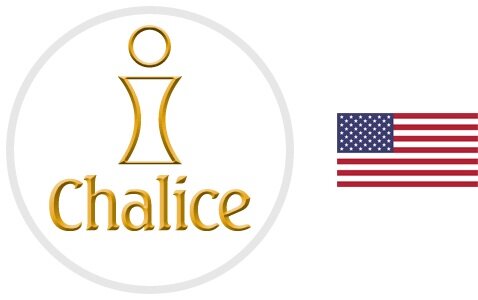Meet Chalice's Director of Latin American Child Sponsorship Programs
If you value accountability and transparency when it comes to knowing how your donation to a charitable organization is made use of then you are in good hands with Chalice’s Regional Director for Latin America, Patricia Bozo de Durán. Hearing Patricia talk about the child sponsorship programs she oversees for Chalice is inspiring; her intelligence and capability are matched with a genuine kindness that immediately makes one feel at ease. She truly cares about Chalice’s mission of empowering people to rise up from poverty. After three years in the Foreign Service working in Washington DC, and experiencing the frustration of bureaucracy, when Patricia signed on with Chalice, she found the efficiency and productive use of donations by Chalice’s mission partners refreshing.

“Making the shift from that kind of job to Chalice was a huge change, but it was really a blessing, because I’ve learned that after sitting years negotiating a specific policy, afterwards you see that nothing is going to happen – ever. Then going to the field and finding out that the Sisters really are doing something and there are changes happening in the community has been a wonderful experience,” Patricia said.
The regional office for Latin America is seated in La Paz, Bolivia. From there Patricia and her staff oversee the finances and operations in Guatemala, Bolivia, Peru, Chile, and Paraguay; comprised of 17 sponsor sites serving approximately 13,000 sponsored children and elderly.
“The purpose of the regional office is to make sure that all our sites comply with the requirements established by Chalice. That’s our main duty, to build audits in the operational and financial area, also we have to do all the training that’s required, translate the manuals and handbooks that are produced in Canada for our region and produce additional manuals that are specific to our sites; for example, the last one that we developed was for DFF, which is Direct Family Funding.”
With regard to DFF, Patricia said in the beginning there were not many believers in the Latin American region, noting that typically people are resistant to change, “The first time we said what about providing cash to families, everybody said, ‘No way. The best thing is just huge distribution, stock purchases, and then we’ll distribute.’ But it’s not dignified to the people,” she said.
“Right now, we are working very hard at financial inclusion. Ninety percent of our families have opened a bank account,” Patricia reported.
As in India and Africa, guardians of sponsored children meet in a Small Community Group (SCG) and decide together how to most effectively use the funds for the benefit of their families with the guidance of a social worker. Each region has a unique name for their SCGs and in Latin America they call them Chalice Family Circles (CFC).
Often the CFC participants are moms and they receive training in financial education, nutrition, or different topics that members identify in which they need training, such as small business initiatives like sewing. As always, school-aged children must attend school.
“For example, in Paraguay, one of the mothers knows how to sew very well and she provided classes to the others. They were so excited. They set up their own group savings in order to purchase sewing machines and with the gift catalog we provided a couple more sewing machines,” Patricia said. When she visited last July, the women were successfully selling aprons in the local area. Some groups also cook and sell food at soccer games or fairs. Not only women participate in the CFCs, Patricia was happy to relay that a lot of fathers are becoming involved as well.
Savings are also addressed in the financial education provided to families according to Patricia. When some families expressed the desire to save funds for higher education when their children were highly motivated students the idea was discussed.
“Everything was on the table,” Patricia said, “There is complete understanding of what should be spent with sponsorship funds and what shouldn’t, so sponsors in the US will have a clear picture of what should be done or not.”
Patricia said she is a witness to the success of Direct Family Funding, “When the DFF methodology starts, you have these moms who are just starting to know each other, and they are very shy, they never smile. You ask them how they will spend their funds and they say, ‘You tell me. You should know better than I do.’ [Our response is] no, you are the mom, you know best what your children need. You come back two years later, and they are so talkative, they are very proud. For the first time in their lives they have earned some interest, even if it’s just 10 cents, they never earned 10 cents from anything. You ask them if they would like to go back to the older methodology and they say, ‘No way, I have my own account!’”
In order to open an account that meant acquiring a birth certificate and an ID card for many of the moms, “It was a great experience for them and so empowering,” Patricia said.
She added that when returning to check on Family Circle Groups three or four years later, “They have this huge gathering where moms organize the whole thing and they are singing and dancing for you.”
“We work with a community for a certain period of time. We are not going to be there forever. We work with a family usually it’s between 10 to 15 years and then most of our families graduate from the program,” Patricia said. Thereafter families are able to sustain themselves.
“Even if it’s humble,” Patricia added, “You don’t want to take the responsibility from the parents. You just want to lend a hand, so they can breathe, they can have some space and then they will be the main providers for their families.”
— Beatrice Maynor, Web Content Editor, Chalice US
